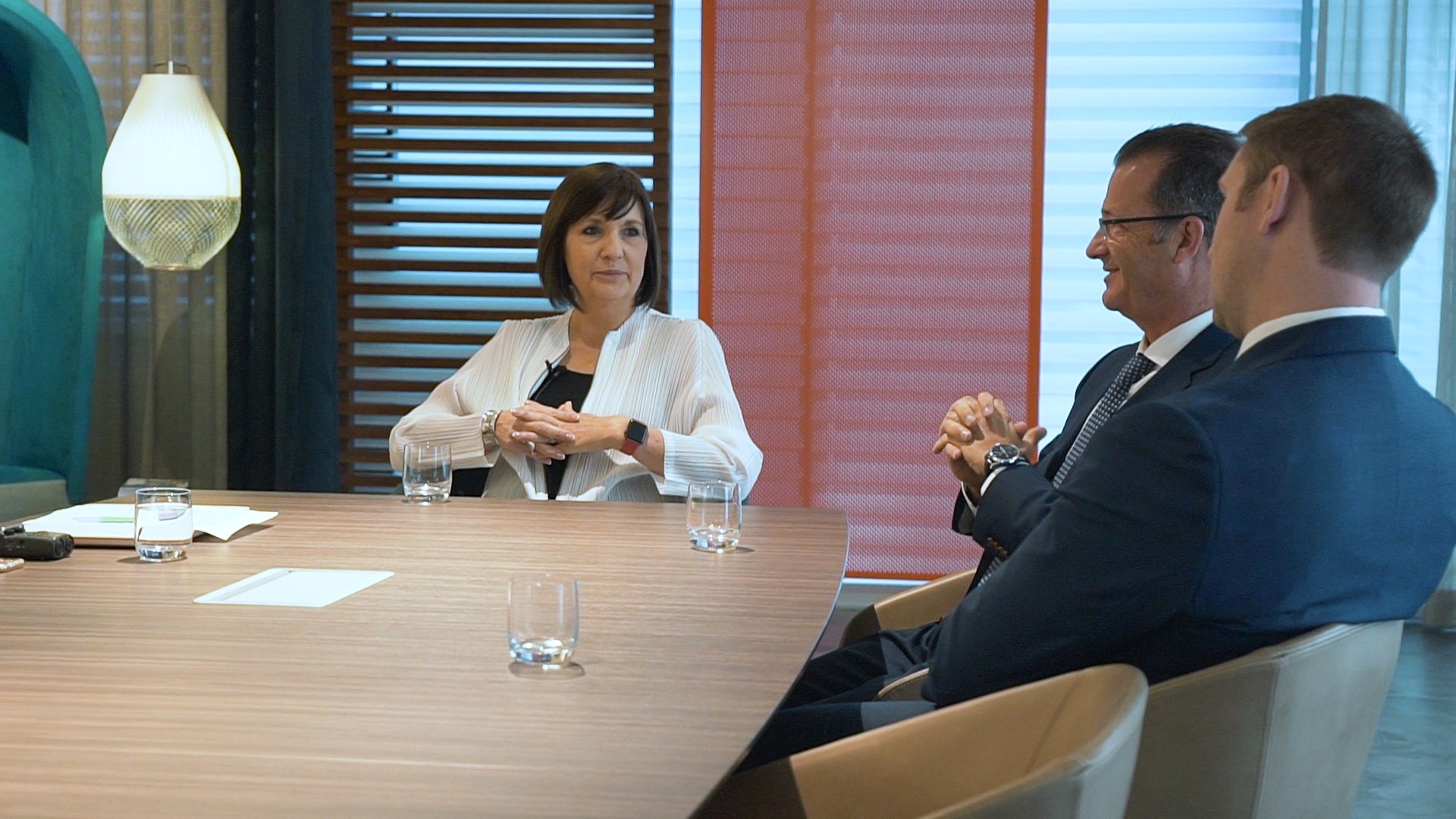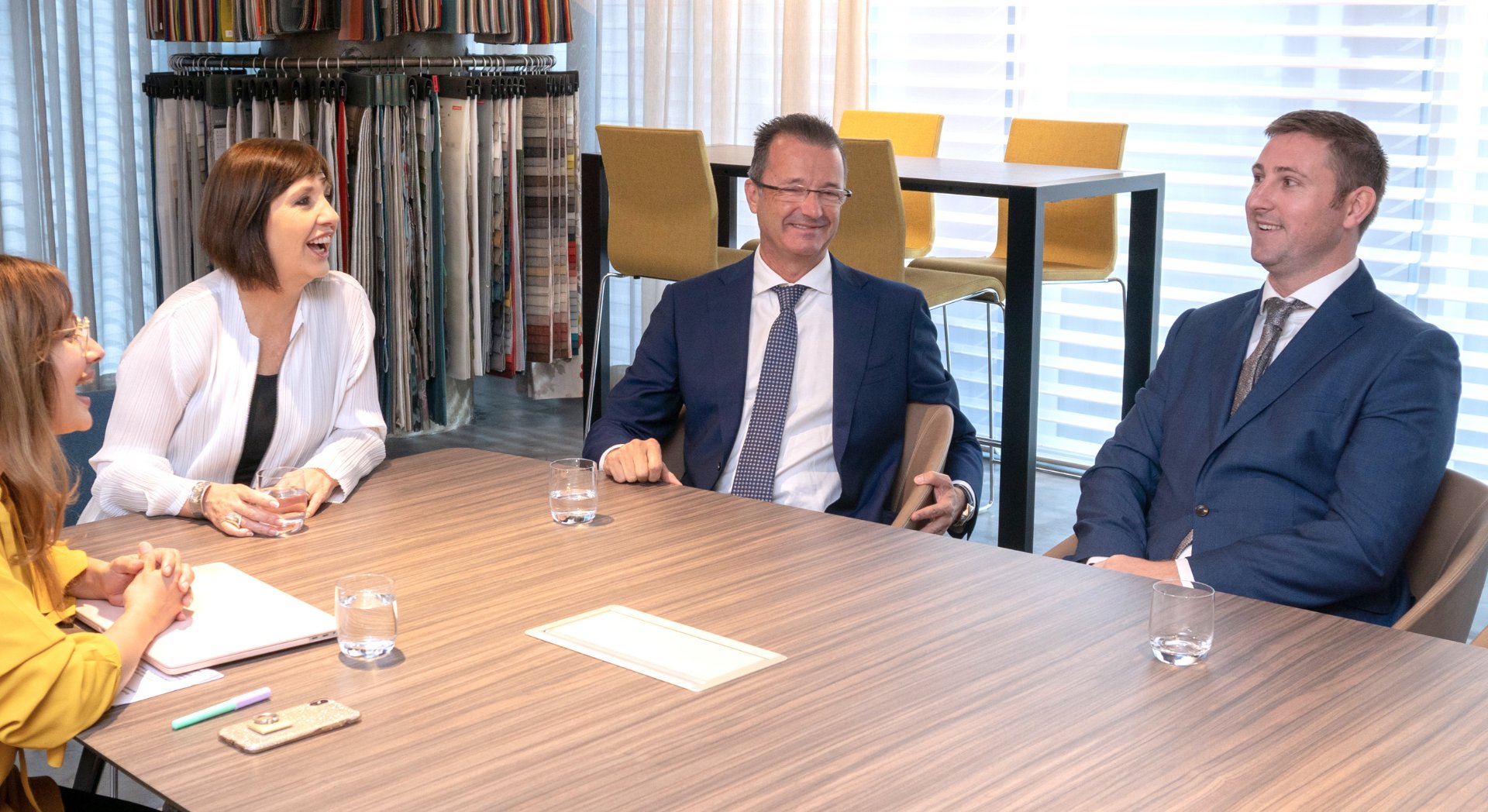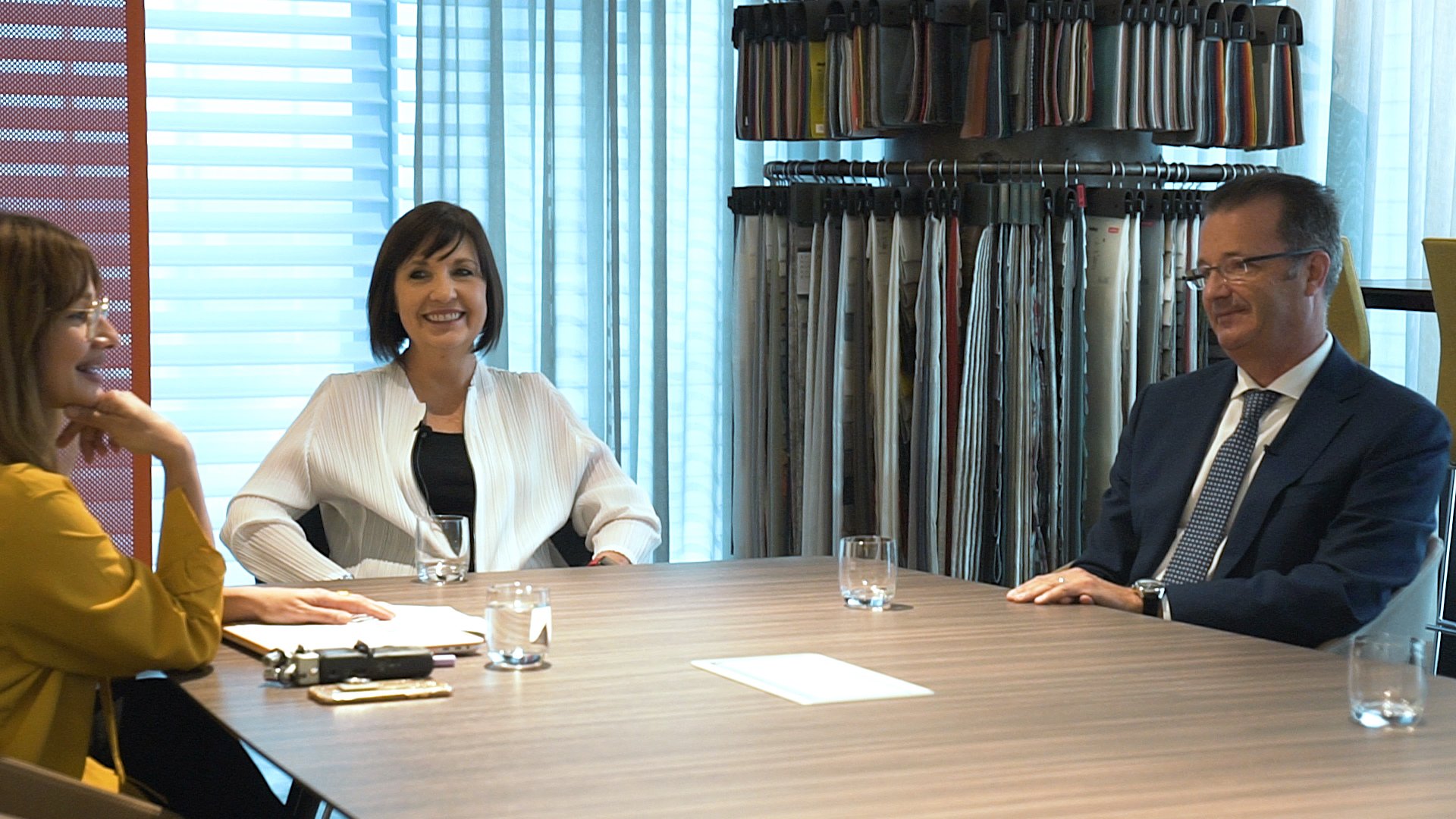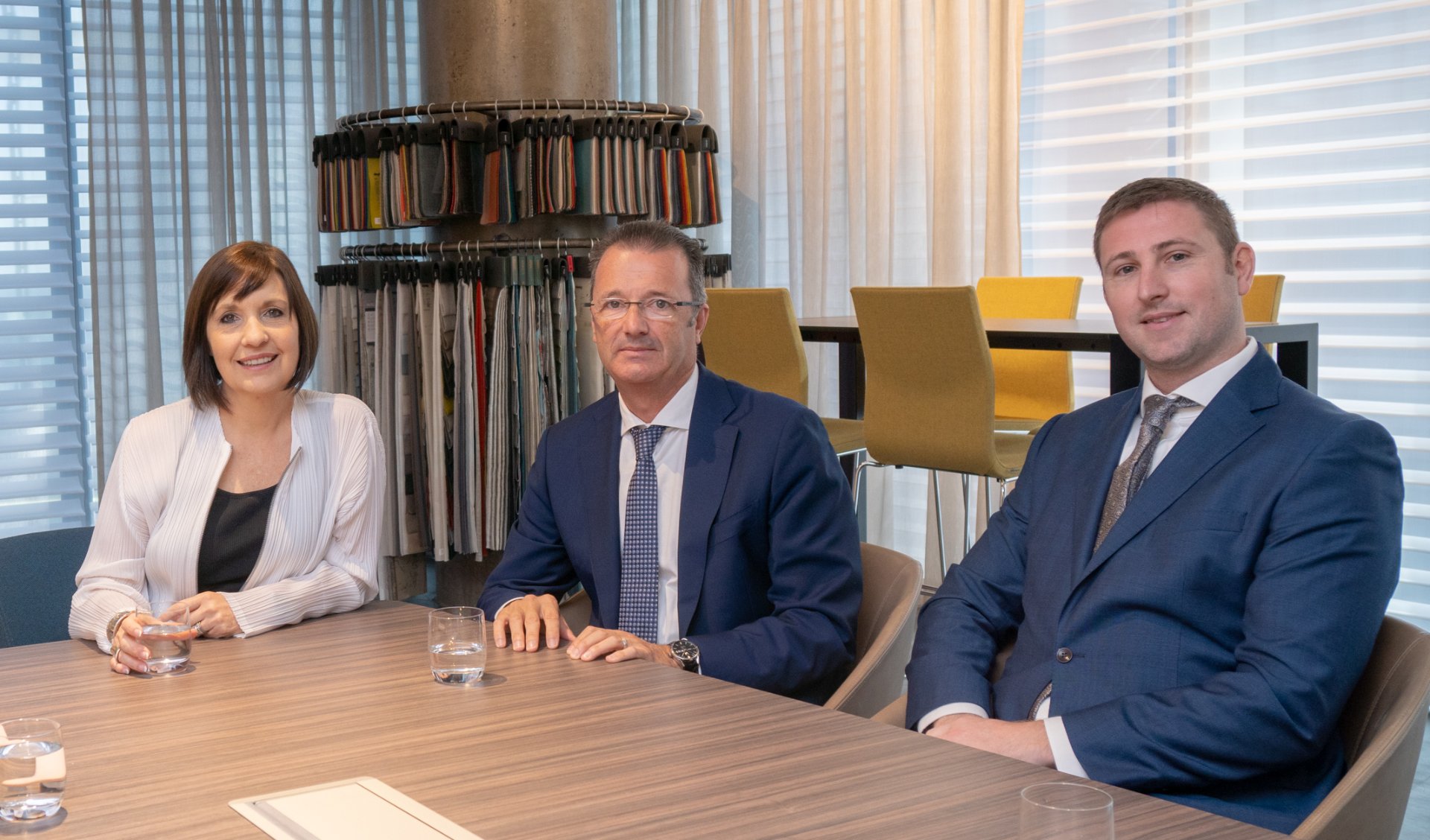Earlier this year, a group of seasoned professionals and heavyweights from the region’s A+D community gathered at the Ahrend showroom in d3, to discuss a topic that is becoming increasingly relevant to their current worksphere – the Design and Build model in commercial interior projects, and whether it can truly unlock efficiencies, and score higher on the sustainability quotient.
The firms participating in this roundtable discussion were fit out contractors Summertown Interiors, design firm Perkins & Will, and project managers CBRE. Post coffee and some general morning mingling, Love That Design posed a few poignant questions to the key reps from these prestigious companies, prior to the start of the roundtable discussion, and an interesting conversation ensued.
Diane Thorsen from Perkins+Will, Mike Whitworth from CBRE, and Marcos Bish from Summertown Interiors explored the benefits and challenges of working under the Design and Build project delivery model versus the traditional, design first, then tender and build approach. Click on the video below to learn more.
Above from left: Mike Whitworth from CBRE, Diane Thorsen from Perkins+Will, and Marcos Bish from Summertown Interiors
What is Design and Build?
The basic definition of a design and build model is when the project owner appoints a single company to manage both the design and construction under a single contract. Rather than having a contract with the designer, and then a fit out contractor, following a tender process.
A Chat with the Pros
The Participants
The seven roundtable participants included Diane Thorsen and Martin Smith from Perkins+Will, Mike Whitworth and Yasmien Ibrahim from CBRE, and Marcos Bish, Joshua Walker and Sarah Flowerday from Summertown Interiors, with Vineetha Mathew from Sustainable Mindz facilitating.
The benefits of employing a Design and Build model
According to the seven roundtable participants, this centralised project delivery model necessitates bringing all members of a project team together early in the process to identify and address issues of cost, schedule and constructability – reducing the overall project delivery time from inception to completion. Having one team accountable for the project under a single contract allows for the proposal of best-value solutions for various construction elements, before the design is complete.
The speakers also noted that Design and Build brings value engineering into the design process at the onset of a project.
“Design and Build allows for the design stage and fit out construction stages to overlap, providing a time advantage. It also gives the client one point of contact, and the cost is established from the start of the project, which would only vary if any changes were made to the initial design.”
– Marcos Bish, Managing Director, Summertown Interiors
Marcos Bish, Managing Director of Summertown Interiors, has been working in the Design and Build industry within the region for the last two decades. According to him, this method allows for the design stage and fit out construction stages to overlap, providing a time advantage. “It also provides the client with one point of contact, and the cost is established from the start of the project, and this would only vary if any changes were made to the initial design.”
Diane Thorsen, Design Director of Perkins+Will agreed with Marcos’ earlier statement. “Design and Build has definite advantages – especially in this market, where there is such pressure on both time and cost. However, for it to work perfectly – there must be absolute alignment amongst teams in understanding the client’s expectations, from costs to programming, to working seamlessly towards an end goal.”
Aligning the budget and project timing from the outset of a project allows greater ability to plan the stages of design and execution. For example, procurement of materials with long lead times can then be initiated earlier, and preparation of the site, such as demolition, can begin. Plus, procurement and sustainability efficiencies can be made from the outset.

“Design and Build has definite advantages – especially in this market, where there is such pressure on both time and cost. However, for it to work perfectly – there must be absolute alignment amongst teams in understanding the client’s expectations”
– Diane Thorsen, Design Director, Perkins+Will
Design and Build vs Traditional Procurement
A point noted in the discussions was that the traditional method was probably a better option for highly bespoke, office and commercial interior projects. The Design and Build method could prove to be a challenge for clients who want in-depth price comparison for specific materials and design specifications.
“However, from a project management perspective, both these routes work well if implemented successfully and driven by a clear strategy,” says Mike Whitworth, Associate Director of CBRE. “In terms of which is better, it is purely down to what is best for the client.”

The Challenges
One of the challenges faced in the Design and Build model is the unrealistic cost calculation at the start, based on media reports of project size and cost.
This can be overcome by working with the key decision makers to establish a solid brief and budget from the outset, and identifying any key materials that must be procured. This will then reduce the need for significant design and budget changes at a later stage, which would otherwise result in delays or more expense.
“From a project management perspective, both models work well if implemented successfully and driven by a clear strategy. In terms of which is better, it is purely down to what is best for the client”
– Mike Whitworth, Associate Director, CBRE
The Sustainability Quotient
Marcos pointed out that there was a definite misconception in the market about a seemingly higher cost of sustainable design. This mindset is driven by consumer perception that eco-friendly or green products cost more than the standard which, according to him, was simply not true. And if there is a clear budget from the outset, sustainable best practices and materials can be incorporated into the design and fit out stages without additional costs. Clients can also explore green certifications, such as LEED, as a benchmark, and it would not cost that much more or take more time to implement. Other best practices around waste management can implemented from the outset with a holistic approach.
The Outcome
All speakers were in agreement on the need for a conversation initiated by industry stakeholders to drive change and bring about realistic project budgets, timelines, payment cycles and quality. In essence, make the industry more transparent.
Discussing how businesses in the region could be further encouraged to adopt a Design and Build strategy, the speakers maintained that the responsibility to educate clients on the benefits of this model lay on industry leaders. Clients would need to understand and ensure that this model would be the one best suited to their company’s needs before committing to a contract.
There should also be a discussion on the benefits of sustainable solutions – social, economic and environmental. And documenting and sharing key learnings would certainly help all parties in the Design and Build process, and the industry on the whole. Although already adopted in some areas, a more holistic approach at the end of a project is very beneficial.








